Empowering communities for natural resource management: the case of Community Resource Management Areas (CREMA) in Western Ghana.
13.12.2019
SUBMITTED ORGANISATION
Conservation Alliance International
DATE OF SUBMISSION
13/12/2019
REGION
Africa
COUNTRY
Ghana
KEYWORDS
CREMA, Natural Resources Governance, Rural Communities, Traditions and Customs, Stakeholders
AUTHOR(S)
Yaw Osei-Owusu and Abigail Frimpong, Conservation Alliance International
Summary Sheet
The summary sheet for this case study is available here.
Abstract
Natural resource management in Ghana has gone through several phases with different results. Prior to colonialism, traditional leaders and local communities devised different mechanisms to protect the integrity of natural resources, including the use of taboos, norms and customs. The adherence to these traditional practices was meant to ensure the long-term conservation of resources and safeguard economic security. The traditional practices were no longer entertained during colonial times and at the time of independence. The government then adopted the protected area management approach for natural resources, which only led to loss of biodiversity. Against this background, the Government of Ghana recognized the value of community involvement in resource governance and established Community Resource Management Areas (CREMAs). The CREMA intervention focuses on bringing together communities that share common resources and take affirmative action to jointly manage their shared resources. An expected outcome of the CREMA initiative has been the willingness of communities to set aside parcels of undisturbed community-owned forests to be sustainably managed. This result will enhance the preservation of sacred groves and other cultural attractions, as well as regulate agricultural production within the landscape.
To sustain the functioning of the CREMA initiative, a robust management strategy that will address the needs of different stakeholders is required. A study was therefore conducted to understand the needs of 1,540 stakeholders, 50.8% of whom were males and 49.2% females, to support the management of the CREMAs. The study adopted a survey and biodiversity assessment strategies to generate data from the respondents. A Community Biodiversity Value Typology was used to assess how the communities value their biodiversity. The consumptive value obtained a total score of 57, indicating that about 21% of the respondents place value on the consumptive use of the resources. This confirms that most of the local people are only involved in subsistence agriculture. There is evidence to suggest that the landscape of the CREMAs is rich in faunal and flora species of global and national importance. Unfortunately, historical and contemporary human activity have had profound influence on the structure and composition of the CREMAs. The decline in wildlife populations can be attributed to rapid human population increases within the landscape, which have led to encroachment on wildlands that previously served as habitats for iconic wildlife species. Notwithstanding, the CREMAs are proving to be the most effective means of engaging communities to appreciate the value of natural resources and participate in their sustainable management.
Keywords: CREMA, Natural Resources Governance, Rural Communities, Traditions and Customs, Stakeholders

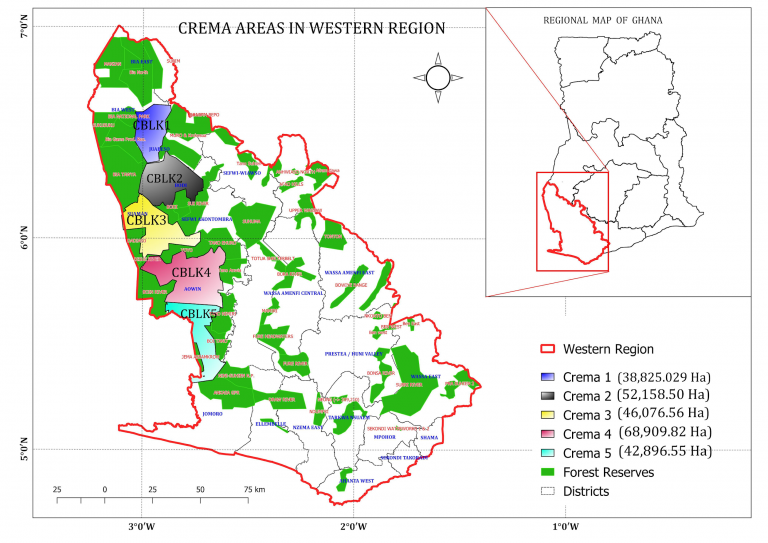
Figure 1. Map of the country and case study region, CREMA sites in Western Region of Ghana

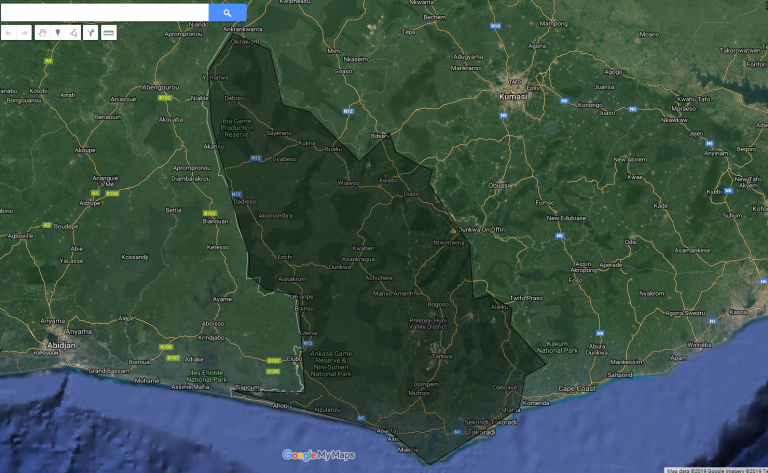
Figure 2. Land cover map of case study site (From Google Maps)
1. Introduction
The role of natural resources in rural development has sometimes been viewed in terms of major public investments in natural resource development such as large multi-purpose projects (Cockx & Francken 2014; eds. Fabricius et al. 2004). Increasingly, natural environmental systems have come to be recognized for their importance to the quality of rural community life. Different stakeholders within resource-rich communities depend on these resources to meet their needs through the exploitation of common property resources such as lands, rivers and forests (eds. Satterthwaite, Reid & Bass 2013). It is therefore understandable that stakeholders place high value on the diverse ecosystem services that emanate from the natural resources to sustain their livelihoods and well-being.
The dependence of rural economies on their natural environment is even more pronounced among communities located within the forest zones of Ghana, due to the diverse goods and services they provide (Ekpe et al. 2014). Any change in the capacity of the ecosystem to sustain these multiple benefits could therefore have dire consequences for rural economies (Reid & Huq 2005; eds Satterthwaite, Reid & Bass 2013). This largely explains the reasons behind the measures taken by different governments to ensure the long-term security of the socio-ecological landscape.
In the past, traditional ethics (norms, precepts, principles and taboos) were adopted to efficiently regulate the activities of community members towards the use and management of natural resources (Binlinla, Voinov & Oduro 2014; Harich et al. 2013; Ntiamoa-Baidu 1995; Udokang 2014). The adherence to these traditional practices were meant to ensure the long-term conservation of these natural resources and safeguard the quality of ecosystem services to the locals. The traditional system of resource government was, however, considered insufficient to ensure sustainable use of natural resources after independence because it could not be enforced by chiefs and elders under the new protected area management system.
West, Igoe and Brockington (2006) noted that post-colonial governments have promoted the protected area management approach to natural resource management by offering enhanced protection to areas of exceptional value (socio-cultural, ecological, economic, etc.). This approach also provided a holistic and landscape perspective to natural resource management and provided added benefits to landscapes with varying levels of human alterations (Millennium Ecosystem Assessment 2010; Stolton & Dudley 2010; Wu 2013). This form of management offered opportunity for the government to sustain its revenue flow from the supply of timber, ecotourism and agriculture. As a means of safeguarding the integrity of these natural resources to be able to deliver multiple benefits to different stakeholders, management systems were modified and programs initiated to take on board the elements of traditional and protected area management.
One of such initiatives is the establishment of the Community Resource Management Area (CREMA) in 2000 by the Government of Ghana to devolve management rights and responsibilities, and authority for natural resources outside protected areas, to local communities. This project was implemented by Conservation Alliance in collaboration with the Wildlife Division of the Forestry Commission and other partners. The CREMA intervention focuses on bringing together communities that share common resources and take affirmative action to jointly manage their shared resources. The increasing demand for the landscape to deliver multiple values and benefits to all the different stakeholders within the socio-ecological landscape poses a great challenge to the sustainability of the initiative.
2. Project area
The project area lies within the Western Region of Ghana and covers an area of approximately 2,391 square kilometres, which represents about 10 percent of Ghana’s total land area (see Fig. 1). Ghana’s Western Region constitutes part of the Upper Guinean forest hotspot. The region has about 75 percent of its vegetation within the high forest zone of Ghana, and lies in the equatorial climatic zone that is characterized by moderate temperatures. It is also the wettest part of Ghana with an average rainfall of 1,600 mm per annum. The CREMA sites lie within latitude 6.598734° and longitude -2.838630°.
The landscape is restricted to a number of isolated patches of forest that contain exceptionally diverse ecological communities, distinctive flora and fauna, and a mosaic of forest types that provide refuge to numerous endemic species. The total area of the CREMAs in the western corridor now stands at over 102,000 ha, and they are located within 182 communities with an estimated population of 113,000 persons in the landscape (CA 2018).
Agriculture is the main economic activity within the landscape. Both tree and food crops are widely cultivated. Cocoa production is an important economic activity and the region accounts for more than 50 percent of Ghana’s cocoa export (see Fig. 4). Traditional land ownership hierarchies and governing systems prevail over the area. The communities within the project area have a unique attachment to natural resources as exhibited in the naming of villages (e.g. ‘Bokaso’, name of a village, translates ‘mountain top’), as well as the festivals that are directly related to celebrating the fruitfulness of agricultural lands (e.g. ‘Eluo Festival’ celebrates fruitful harvests) (see Fig. 3 and 4). The CREMA landscape is well structured thus making it easy to communicate and monitor the use of natural resources by stakeholders.
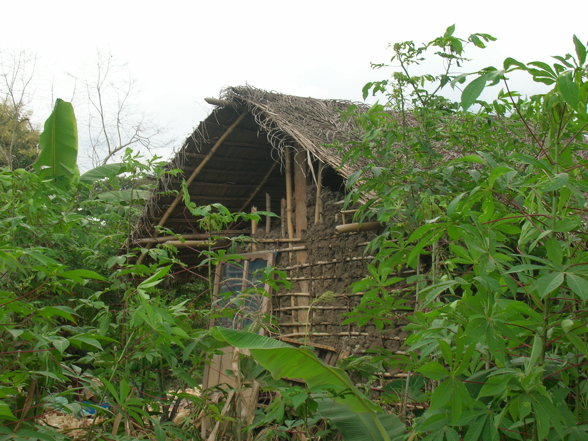
Figure 3. Rural housing within CREMA
(Source: CA, Ghana, 2018)

Figure 4. Women carrying baskets of cocoa pods
(Source: CA, Ghana, 2018)
3. The problem
The 1992 Constitution vested all minerals and natural resources in the presidency (Government of Ghana 1992). The Government, therefore, established the Lands, the Forestry, the Water Resources and the Minerals Commissions and their allied agencies to manage these resources. Until the change in management regime, the locals had adopted norms, precepts, principles and taboos to efficiently regulate the actions of community members towards the use and management of natural resources (Binlinla, Voinov & Oduro 2014; Harich et al. 2013; Ntiamoa-Baidu 1995; Udokang 2014). With an increasing pressure on resources and the resulting land degradation, an urgent action to develop a more efficient management system that would sustain the integrity of the natural resources and serve the needs of all stakeholders was required. The CREMAs were thus put in place to allow for local participation in natural resource management and to address multiple demands on ecosystem goods and services. A knowledge of the needs of the different stakeholders was thus critical in designing a more robust management system to enhance the health of the socio-ecological landscape and reduce biodiversity loss.
3.1 Approach
This study sheds light on the multiple values that different stakeholders have placed on the CREMAs and the health of the production landscape. It used two main approaches to generate data for analysis and reporting: a Community Biodiversity Value Typology (CBVT) and a rapid biodiversity assessment using the Rapid Assessment Program (RAP) technique.
The CBVT approach links local perception of place to a broader measure of environmental values at the landscape level. The approach was thus used to assess how the communities value their biodiversity (see Table 1). The tool provided insight into how these values are likely to motivate certain community behaviors, as well as facilitate the design of appropriate biodiversity conservation projects. To capture the communities’ perception of the socio-ecological value of the CREMA landscape, the study purposefully categorized stakeholders into seven groups for ease of assessment, analysis and reporting. The groups included chiefs and elders, a religious group, farmers, a men’s group, a women’s group, herbal medicine practitioners, and the youth. There were 1,540 participants, with 50.8% males and 49.2% females. This is consistent with the demographic characteristics of the area, with the female population being less than 2% that of their male counterparts (Ghana Statistical Services 2018). Through a participatory manner, the groups identified eight multiple values, including consumptive, production, naturalistic, aesthetic, symbolic, moralistic, education and training and ecosystem services, that the CREMAs are perceived to deliver. Members of each identifiable group were given the opportunity to rate the values on a scale of 1 to 10 at several informal meetings. Each group had a total of 220 persons and each member of the group rated the CREMA in terms of the services it is perceived to provide (see Fig. 5).
Additionally, a rapid biodiversity assessment was also conducted to obtain first-hand information on the state of biodiversity in the CREMA sites. The field assessment by a team of taxonomic experts focused on the forest condition and the levels of primary species, such as the large and small mammals present within the site. The ecological health of the sites could further explain the differences among stakeholders’ perception of the value of the landscape and could also be key in determining the success or otherwise of similar initiatives.
3.2 Project activities
The project activities were also consistent with the objectives of the International Partnership for the Satoyama Initiative (IPSI). In particular, the project promoted increased knowledge and understanding of biodiversity and the production landscape (Objective 1) and addressed the causes of loss of biodiversity and cultural diversity (Objective 2). Similarly, it promoted improved benefits to communities from SEPLS (Objective 3). The outcome of the project is reflected in the health of the socio-ecological landscape and the well-being of the locals. The study was thus built around two main thematic areas, as shown below.
i. Establishment of the multiple values of the CREMA sites held by stakeholders; and
ii. Establishment of the socio-ecological health of the production landscape.
3.2.1 Establishment of multiple values placed on the CREMA sites held by stakeholders
Information on the socio-cultural significance of forest resources can be gleaned from anthropological, ethnobotanical, geographic, ethnomedical, and linguistic studies. The variety of socio-cultural values, beliefs and symbolic functions ascribed to forests are as numerous and diverse as the communities and cultures within forest landscapes of Ghana. Physically and mystically, forests have defined the environment of communities in the region throughout time (Falconer 1990). The distinction that has been made between cultural values and the functions of forests is actually an artificial one. These values are not merely an additional layer of issues to consider as constraints to normal management, but are the vehicle through which the value of biodiversity to society is realized (Tabush 2010). Tangibly and intangibly, forests feature in all aspects of culture: language, history, art, religion, medicine, politics, and even social structure itself, and actually define people’s sense of identity.
The forest has traditionally been regarded as the home of ancestral spirits who provide protection, success and progress to the people of the Traditional Area. The forest symbols thus provide social structure and cultural identity in the rapidly changing environment of the CREMA landscape. The trees, the links between the sky and earth, symbolize the links between the spiritual world of ancestors and people. Rituals and ceremonies which draw on forest symbols serve to link the people to their cultural heritage, as well as their ancestral past (Calame-Griaule 1970). A number of taboos, customs and other norms are thus observed by a group of people within a defined forest fringe locality to show reverence to the forest through regulation of the use of forest resources. The community forests are thus sources of stories, myths and local traditions which provide strong justification for the continued protection of the CREMA landscape. The CREMAs also provide a range of products for traditional ceremonies, from food and beverages to costumes and musical instruments. While some of these products are now perhaps less often used on a day-to-day basis, they still form essential elements of a variety of cultural activities.
Some wild animals in the CREMAs are regarded as totems for some of the clans. Some streams and rivers are also regarded as gods by the fringe communities (CI-Ghana 2002). The reverence for these resources accounts for the taboos and norms that prohibit the hunting of these sacred animals. Several studies have established the commitment of the people within the landscape to support any measures that will contribute to the continuous existence of the forest and maintenance of its ecological integrity (CA-Ghana 2015; CI-Ghana 2002). The ecological services provided by the CREMAs largely account for the large number of migrants involved in agricultural production. (CA-Ghana, 2015)
3.2.2 Establishment of the ecological health of the production landscape
The landscape of the CREMAs forms part of the moist-evergreen forest described as vertically compressed with canopy trees rarely exceeding 40 metres (Hawthorne & Abu-Juam 1995). The high forests of the project area, like the other tropical forests of the upper Guinea, are characterized by a rich and complex floristic and faunal composition. The landscape is made up of many different tree species (including Triplochiton scleroxylon, Khaya invorensis, Celtis sp., Terminalia superba, Entandrophragma ivorensis, Ceiba petandra, Antiaris africana and Milicia exelsa). Deforestation through logging and clearance for agricultural land has occurred over much of the species range, especially in the last century. In addition, both subsistence and commercial hunting have heavily impacted populations of these species.
The distribution and trends in all wildlife populations within the landscape point to a steady and continuous decline (CA 2018). It is evident that the major threats to species are habitat loss and degradation and hunting. Improved access to forest interiors through logging roads has increased hunting pressure on these species. The CREMA initiative is thus meant to reduce habitat and species loss through collaborative and sustainable management of community forests.
4. Results of the study
The survival of the communities is precariously linked to the biodiversity resources of the area. Community members depend on the biodiversity resources for their income, health, food, housing and cultural practices (CI-Ghana 2003). The respondents expressed striking differences in the value they place on the CREMA socio-ecological landscape.
4.1 Establishment of the multiple values placed on CREMA sites by stakeholders
Whilst biophysical, and increasingly economic, values are often used to define high priority hotspots in planning for conservation and environmental management, community values are rarely considered (Raymond et al. 2009).

Figure 5. Chiefs and elders at CREMA Meeting
(Credit: CA, Ghana, 2018)
The numerical values placed on the eight identified biodiversity values by the different identifiable groups were computed to establish scores, as shown in Table 1.
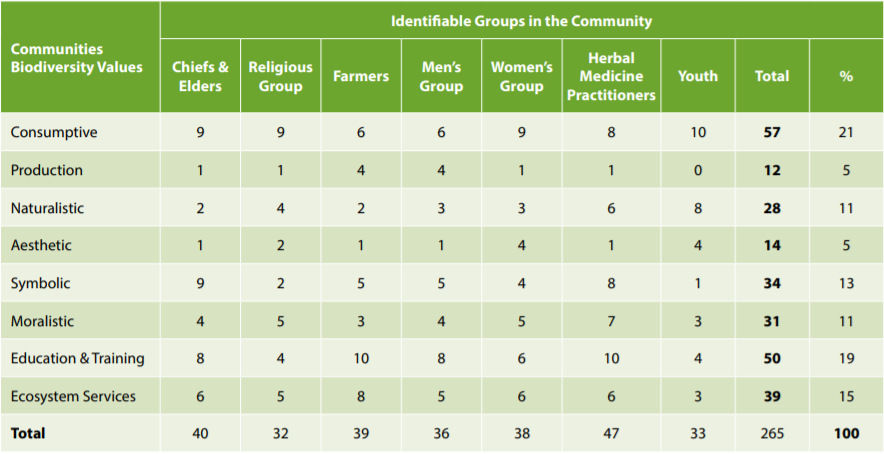
Table 1. Community biodiversity values (scores)
Source: Conservation Alliance International 2018)
Scoring legend: On a scale of 1 to 10, with 1 (10%) = least value; 10 (100%) = highest value
The consumptive value obtained a total score of 57, which means that about 21% of respondents consider their biological resources to be for consumptive use (see Table 1). This supports the fact that the people are only involved in subsistence agriculture (i.e. to feed their families), since there is virtually no new land to support the cultivation of cocoa and other cash crops due to population increase in the area.
The community members traditionally use their forests and agricultural lands as training grounds for their children. Farmers traditionally train their children on farms. By working with their parents on farms, children acquire hands-on training and professional maturation. It is for this reason that the table shows a second highest score of 50 (19%) for the education and training value of the biodiversity of the area. The community rated ecosystem services as the third most important value at 39 (15%), after considering the key ecological services, i.e. provisioning, regulating, cultural and supporting. Symbolic value received the fourth place (13%) since the landscape is made up of indigenous communities. In such a rustic society, much of the daily language is full of proverbs and euphemistic expressions, which is not often the case in urban areas with their cosmopolitan nature.
4.2 Establishment of the ecological health of the production landscape
The physiology of the sites under review make the landscape a critical component enhancing the environmental resilience of the surrounding area in terms of being able to withstand environmental stresses such as drought, mineral deficiencies, unfavourable temperatures, and air pollution. The landscape has rich flora and faunal species, including mammals, amphibians and reptiles, butterflies and birds. Over 50 species of birds have been recorded; they include the internationally endangered white-breasted guineafowl. Unfortunately, historical and contemporary human activity have had profound influence on the structure and composition of the forests. The average condition score of 3 was established by the taxonomic experts after the biological assessment. This score (based on Hawthorne & Abu-Juam 1995) indicates a high level of degradation of the landscape with opportunity for improvement.
The landscape has a network of rivers and streams, thus plays an important watershed protection function, preserving the quality and quantity of water for major towns and environs. Approximately half a million people depend on these water sources and the critical watershed services provided by the landscape that soaks up rain and mist and then holds, cleans and discharges the water for all to utilize.
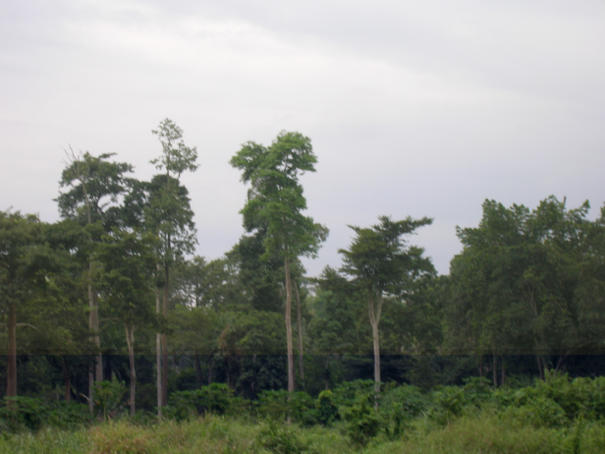
Figure 6. A Community Forest (CREMA) (Credit: CA, Ghana, 2018)

Figure 7. Wattle and Dubb house under construction (Credit: CI-Ghana 2006)
The CREMAs also provide local communities with a broad range of products, including food, medicine, materials for building, and energy in the form of fuelwood (CA-Ghana, 2018). Where sufficient, communities are able to harvest these products for commercial purposes (see Fig. 7). Over 150,000 m3 of timber and about 400 tonnes of other wood products are extracted yearly from the CREMA sites (Ansah 2014). Other timber products obtained from the forest include firewood, and wood for mortars and pestles (Ansah 2014; Ayivor & Gordon 2012). Cocoa plantations also supply a portion of the non-timber products to local communities that also benefit from the harvesting of cocoa itself. The herbaceous cover, however, provides suitable conditions for only part of the extensive list of non-timber products provided by forests, and in most cases also in smaller amounts.
The forests provide a number of regulating services including local microclimate amelioration and air quality maintenance, moderation of extreme events, erosion prevention and maintenance of soil fertility, pollination and biological control of pests. One striking feature in terms of regulating services by CREMAs is their carbon sequestration potential. The vegetation in the CREMAs, including cocoa and herbaceous cover, contribute to capturing and storing carbon from the atmosphere, thus contributing to the maintenance of favorable global climatic conditions. Forest loss and fragmentation, which generate various negative environmental and ecological consequences, have become widespread phenomena across Ghana.
5. Discussion
The study has clearly established the significance of the CREMAs in promoting multiple benefits to communities within the landscape. The use of the Community Biodiversity Value Typology helped to define the differences among stakeholders with respect to the value they place on the CREMAs. There was evidence to suggest that different stakeholders have different preferences.
The high consumptive value of the CREMAs is an indication that most respondents expect the landscape to support agricultural activities. Any management system should therefore ensure that the ecological health of the CREMAs is sustained to deliver ecological goods and services.
Considering the total value of biodiversity to the groups, the herbal medicine practitioners considered the CREMA environment as very important and lucrative. This probably stems from the fact that they are able to make money out of the various herbal plants in the area despite the current level of degradation. It also indicates that there is demand for herbal medicine and that if development operations lead to deforestation, the public health and the livelihoods of the practitioners could be drastically affected (see Fig. 8 and 9).
The chiefs and elders, religious group, women’s group and the youth, generally considered the biological resources of the area to be mainly for consumptive purposes. Only the farmers and the men’s group pointed out that the biological resources of the area are of limited production value. Similarly, only the women’s group and the youth indicated that the biological resources of the area have some aesthetic value. These marked differences clearly capture the relative importance of the CREMA sites to the various groups.

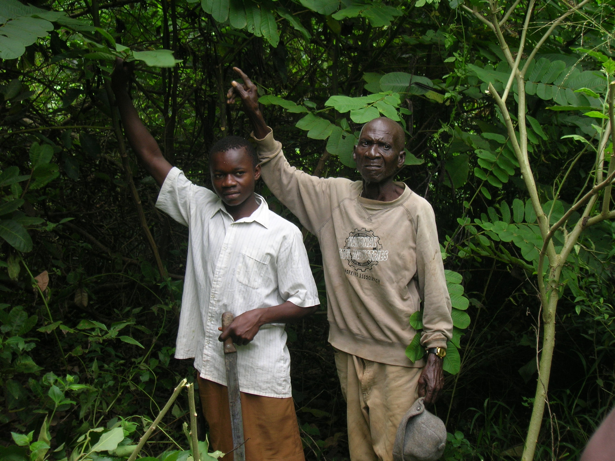
Figure 8 and Figure 9. Two community herbalists showing the team plants of medicinal importance (Credit CI-Ghana 2002)
The overall interpretation of responses show that the CREMA communities view their biological resources as valuable for consumptive purposes and an excellent training ground for their children going into adulthood (CA-Ghana, 2018). Even though the land is degraded and cannot support adequate food production for the communities, the chiefs and elders consider it to have great value important to their survival. Since they are, by tradition, the custodians of all the lands, they periodically obtain royalties from developers to support their survival and the chieftaincy institution. They are also enjoined by their traditional oath of office to hold the land in trust for the next generation. The assessment has shown there to be a strong bio-cultural relationship between the CREMA community and its natural environment. In view of this, subsistence farming and the collection of wood and non-wood forest produce form the community’s lifeline.
There is evidence to suggest that the landscape of the CREMAs is rich in faunal and flora species of global and national importance. Unfortunately, historical and contemporary human activities have profoundly influenced their ecosystems resulting in decline iconic wildlife species. This encroachment poses challenges to both humans and wildlife, with their encounters often resulting in human-wildlife conflicts.
The CREMA initiative makes provision for routine monitoring of the ecological health of the landscape and the socio-economic impacts of the project at the community and landscape levels. This is to ensure that potential risks are addressed and opportunities utilized. The CREMA constitution provides the main guiding principles for all activities within any given CREMA. It was therefore developed with broad consultation and deep reflection on the part of all CREMA communities. A well-defined governance structure guided by the CREMA constitution was put in place to oversee the general management of the CREMAs. Each CREMA sets up a monitoring team that monitors the progress of their action plans, with teams usually including CREMA leaders, members and relevant stakeholders. The teams make periodic visits to the CREMAs and make the needed recommendations for uptake by the Wildlife Division, statutorily responsible for facilitating the efficient management of the CREMAs. A CREMA Secretariat is provided for the CREMAs to undertake all administrative functions. At the national level, a forest and wildlife monitoring scheme has been developed to guide periodic field assessment of the CREMAs. This activity is undertaken by the district office of the Wildlife Division and reported to the national office to help address any challenges confronting the CREMAs.
In spite of the positive contribution of the CREMAs to the ecological health of the landscape, the system is saddled with a number of challenges. The most important challenge is the sustainability of the funding support from the government and its international partners.
6. Conclusion
The diverse but critical services delivered by CREMAs to the vast majority of the communities justify their continued protection through a community-based arrangement. Further investigation into the value that the different categories of stakeholders place on the CREMAs and the services they provide could help in the development of appropriate management actions that ensure the delivery of conservation outcomes, the distribution of social benefits and management effectiveness.
Acknowledgements
We acknowledge the funding support from the World Bank under the ENFAL project, without which the project could not have been implemented. We also put on record our gratitude to the community members, especially the leadership of the CREMA initiative. We thank the staff of Wildlife Division of the Forestry Commission who provided the technical support during the implementation of the CREMA initiative. We also thank all the collaborating organizations, including Rural Support Network, Earth Service, Adehye Farmers Association and Conservation Cocoa Association. Finally, we thank all the CA field team, without whose support the project would have failed to achieve the recorded outcomes.
References
Ansah, MO 2014, ‘Decision making manual for natural resource rich communities’, Unpublished, Kumasi, Ghana.
Ayivor, JS & Gordon, C 2012, ‘Impact of land use on river systems in Ghana’, West African Journal of Applied Ecology, vol. 20, no. 3, pp. 83-95.
Bass, S, Reid, H, Satterthwaite, D & Steele, P (eds) 2004, Reducing Poverty and Sustaining the Environment: The Politics of Local Engagement, Earthscan, London.
Binlinla, JK, Voinov, A & Oduro, W 2014, ‘Analysis of human activities in and around protected areas (PAs): Case of Kakum conservation area in Ghana’, International Journal of Biodiversity and Conservation, vol. 6, no. 7, pp. 541–54.
Calame-Griaule, G 1970, ‘Pour une étude ethnolinguistique des littératures orales africaines’, Langages, 5ᵉ année, n. 18, pp. 22-47.
Cockx, L & Francken, N 2014, ‘Extending the concept of the resource curse: Natural resources and public spending on health’, Ecological Economics, vol. 108, pp. 136–49.
Conservation Alliance (CA) 2018, Community Resources Management. Western Regional Corridor, Field Report, Accra.
Conservation Alliance (CA) 2015 -Multiple Use of Biodiversity by Forest Fringe Communities, Field Report, Accra
Conservation International-Ghana 2002, Ghana Ecotourism Strategic Report, Accra.
Conservation International-Ghana 2003, Handbook of Totems in Ghana: Traditional Mechanism for biodiversity conservation, Innolink, Accra.
Conservation International-Ghana 2006, Community Biodiversity Use Assessment Akyem Project Area.
Ekpe, EK, Hinkle, CR, Quigley, MF & Owusu, EH 2014, ‘Natural resource and biodiversity conservation in Ghana: The use of livelihoods support activities to achieve conservation objectives’, International Journal of Biodiversity Science, Ecosystems Services and Management, vol. 10, no. 4, pp. 253–61.
Fabricius, C, Koch, E, Magome, H & Turner, S (eds) 2004, Rights, Resources and Rural Development: Community-based Natural Resource Management in Southern Africa, Earthscan, London.
Falconer, J 1990, The Major Significance of ‘Minor’ Forest Products: The Local Use and Value of Forests in the West African Humid Forest Zone, Food and Agriculture Organization, Rome.
Ghana Statistical Services 2018, viewed 15 June 2019, <http://www2.statsghana.gov.gh>.
Government of Ghana 1992, Ghana’s Constitution of 1992 with Amendments through 1996, viewed 20 June 2019, <http://extwprlegs1.fao.org/docs/pdf/gha129754.pdf>.
Harich, FK, Treydte, AC, Sauerborn, J & Owusu, EH 2013, ‘People and wildlife: Conflicts arising around the Bia Conservation Area in Ghana’, Journal for Nature Conservation, vol. 21, no. 5, pp. 342–49.
Hawthorne, WD & Abu-Juam, M 1995, Forest Protection in Ghana, IUCN/ODA/Forest Department Republic of Ghana, Gland, Switzerland and Cambridge.
Millennium Ecosystem Assessment 2005, Ecosystems and human well-being: synthesis, World Resources Institute, Island Press, Washington, DC.
Ntiamoa-Baidu, Y 1995, Indigenous vs. introduced biodiversity conservation strategies: the case of protected area systems in Ghana, Biodiversity Support Program.
Raymond, CM, Bryan, BA, MacDonald, DH, Cast, A, Strathearn, S, Grandgirard, A & Kalivas, T 2009, ‘Mapping Community Values for Natural Capital and Ecosystem Services’, Ecological Economics, vol. 68, no. 5, pp. 1301-15.
Reid, H & Huq, S 2005, ‘Climate change-biodiversity and livelihood impacts’, in Tropical Forests and Adaptation to Climate Change, eds C. Robledo, M Kanninen & L Predroni, Center for International Forestry Research, Bogor, Indonesia, pp. 57-70.
Stolton, S & Dudley, N 2010, Vital Sites: The Contribution of Protected Areas to Human Health: a Research Report by WWF and Equilibrium Research, WWF.
Tabush, P 2010, Review of the Cultural Values of Trees, Woods and Forests, The Research Agency of the Forestry Commission, viewed 12 June 2018.
Udokang, EJ 2014, ‘Traditional ethics and social order: A study in African philosophy’, Cross-Cultural Communication, vol. 10, no. 6, pp. 266-70.
West, P, Igoe, J & Brockington, D 2006, ‘Parks and peoples: the social impact of protected areas’, Annual Review of Anthropology, vol. 35, pp. 251–77.
Wu, J 2013, ‘Landscape sustainability science: ecosystem services and human well-being in changing landscapes’, Landscape Ecology, vol. 28, no. 6, pp. 999–1023.

